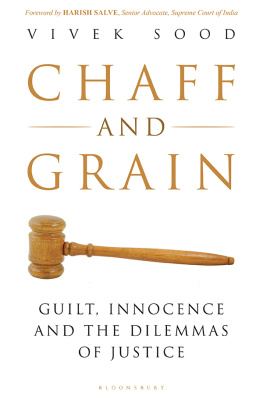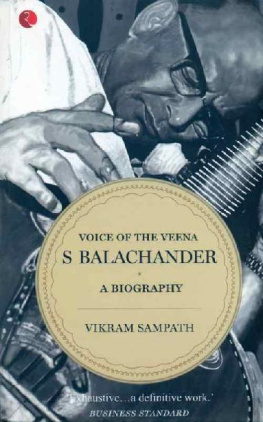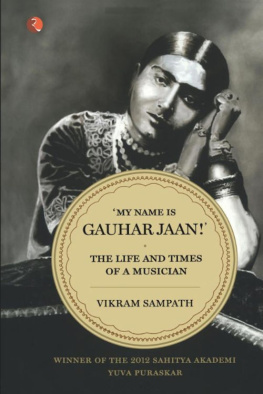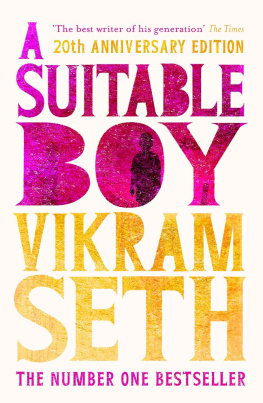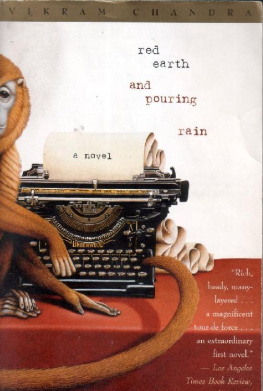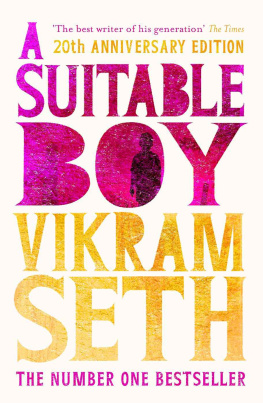Vikram Sood - The Ultimate Goal
Here you can read online Vikram Sood - The Ultimate Goal full text of the book (entire story) in english for free. Download pdf and epub, get meaning, cover and reviews about this ebook. year: 0, genre: Politics. Description of the work, (preface) as well as reviews are available. Best literature library LitArk.com created for fans of good reading and offers a wide selection of genres:
Romance novel
Science fiction
Adventure
Detective
Science
History
Home and family
Prose
Art
Politics
Computer
Non-fiction
Religion
Business
Children
Humor
Choose a favorite category and find really read worthwhile books. Enjoy immersion in the world of imagination, feel the emotions of the characters or learn something new for yourself, make an fascinating discovery.

- Book:The Ultimate Goal
- Author:
- Genre:
- Year:0
- Rating:5 / 5
- Favourites:Add to favourites
- Your mark:
- 100
- 1
- 2
- 3
- 4
- 5
The Ultimate Goal: summary, description and annotation
We offer to read an annotation, description, summary or preface (depends on what the author of the book "The Ultimate Goal" wrote himself). If you haven't found the necessary information about the book — write in the comments, we will try to find it.
The Ultimate Goal — read online for free the complete book (whole text) full work
Below is the text of the book, divided by pages. System saving the place of the last page read, allows you to conveniently read the book "The Ultimate Goal" online for free, without having to search again every time where you left off. Put a bookmark, and you can go to the page where you finished reading at any time.
Font size:
Interval:
Bookmark:

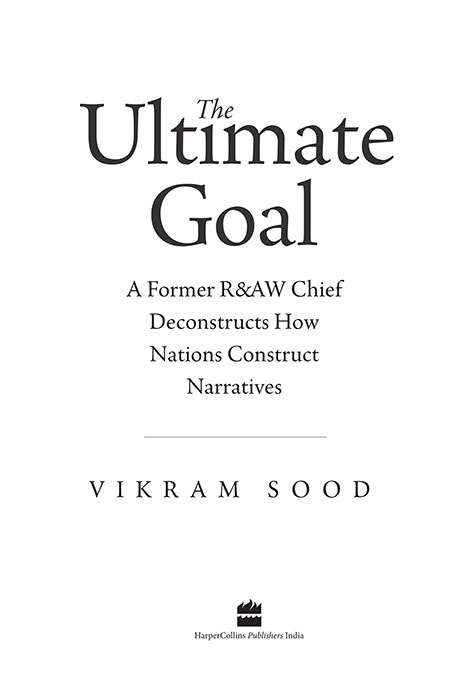
To my wife
IT WAS ON A late morning in October 1948 that a man in his late forties, dressed rather inconspicuously but appropriately for Moscows autumn, boarded a train for Warsaw from the nearly hundred-year-old Leningradsky station. He was a man on a mission eminently suitable for his talents he was fluent in five languages and a talented painter and musician. Warsaw was not his destination. Upon arrival, he discarded his identity papers and took on the identity of Andrew Kayotis, a Lithuanian-born US citizen with an American passport. Kayotis then travelled to Czechoslovakia, Switzerland and Paris before boarding the RMS Scythia from Le Havre, destined for Quebec. Once there, Kayotis moved to Montreal before turning up in New York in November 1948.
A Soviet illegal met Kayotis and handed him some start-up cash, a genuine birth certificate and a forged draft card and tax certificate, all in the name of an Emil Robert Goldfus. The real Goldfus had died a few months after his birth on 2 August 1902 in New York, and the Soviets had acquired his birth certificate. The false Goldfuss credentials as an artist and photographer enabled him the facility of movement and freedom not bound by regular hours, so he could work to revive the Soviet intelligence communication network, the Volunteers, as they were called.
There was an urgency about Goldfuss mission. After US President Harry S. Truman announced on 6 August 1945 that the US Air Force had dropped the atom bomb on Hiroshima, Japan, adding unapologetically that the US would continue to target the enemy with greater power if need be, the message to Joseph Stalin was clear. The former ally and then adversary was told that the post-Second World War narrative of parity had changed. From that moment on, the United States was asserting that it was the paramount global power.
This drastically altered power equations and global perceptions. Stalin's prestige was at stake, as was that of the Great Soviet Proletariat that should have been conquering the globe under his command. The thought that the US would become the sole superpower was not an acceptable narrative. Balance had to be restored, and quickly.
In the summer of 1945, Stalin went into a huddle in his secret dacha in Kuntsevo with some of his closest advisers, including his intelligence chief, Lavrentiy Beria. Although Soviet spies, like Klaus Fuchs and others, had already infiltrated the Los Alamos Laboratory and the Manhattan Project that had developed the nuclear weapons in the US, the gathering of intelligence had slowed down because of heavy American surveillance. We can assume that Stalin, driven by rage and fear, ordered that the network be revived. And soon, the NKVD (Peoples Commissariat for Internal Affairs) was in frenzied pursuit of atomic secrets.
Goldfus set himself up in a studio apartment in Brooklyn, New York. Soon enough, he succeeded in reviving the communication system. He was able to collect and deliver vital intelligence from the extensive ring of the Soviet Unions atomic spies like Zhorzh Koval and Klaus Fuchs with an elaborate support network formed by Lona and Morris Cohen, Morton Sobell, and Julius and Ethel Rosenberg. The Soviets tested their bomb in Kazakhstan on 29 August 1949. They had caught up with the archenemy, parity had been restored and Stalin was pleased. The narrative was freezing into the Cold War.
In the epilogue to this story, Koval slipped away, Fuchs got imprisoned in England in 1950, Stalin died in 1953 and Beria was executed soon after. Goldfus was betrayed by his deputy and arrested in New York in 1957. The American press went ballistic when Goldfus declared that his name was Col. Rudolf Ivanovich Abel. In reality, there was no Colonel Abel; it was a name the Soviets had given him as a cover. Goldfus used it to convey to his masters that it was really him that the Americans had arrested and that he had not revealed his actual identity.
In 1962, he was exchanged at the Glienicke Bridge that linked West Berlin with Potsdam for the American pilot, Francis Gary Powers, who had been shot down and was in Soviet custody. He died in 1971 and his tombstone read, Col. Rudolf Abel, along with his real name, Vilyam Genrikhovich Fisher. Fisher was the son of Russian migr parents, and was born in England in 1903. Purist spymasters say that Abel was not really much of a success in New York, but it suited the Soviets to exchange him for Powers as a grand gesture to the Americans. After fourteen years in America, Abel was the spy who had come in from the cold.
***
Facts are not always what they appear to be but are often what they are perceived to be. Thus, the truth is not supreme in affairs of state, and is often hidden within a bundle of lies, half-truths and innuendo. Instead, perceptions built on narratives become the accepted truth. Over time, we become the embodiment of our perceptions, prejudices, hates and dislikes, as well as our own nationalisms that often border on narcissistic beliefs.
Unlike scientific facts or mathematical equations, which are sacrosanct until proven otherwise, political facts, historical facts and ideas are malleable and can be changed as per geopolitical convenience. Scientific proof is rarely required, but archaeological facts for history are an exception. This conviction is determined by the narratives created.
In the summer of 2020, the almighty United States is boarded up as the world sees police high-handedness on its streets and rioting hordes breaking into stores across the country, apparently looting in protest. The disempowered seek change; those in power naturally oppose this. Another, potentially more serious, narrative is being played out across the Himalayas as two nuclear-armed states with the largest armies in the world India and China confront each other thanks to Chinese provocation.
Meanwhile, the coronavirus that continues to wreak havoc across the world, and is widely believed and accepted to have originated in China, has its own narrative. A well-publicized and elaborate military exhibition of Chinas preparedness and intentions across its borders, chiefly aimed at India, comes at a time when the US is in domestic strife. Both these acts seem to be part of a Chinese narrative driven by premature hubris in Asia and perhaps even in the world. These acts also reveal the true nature of a rising power that is irresponsible, egregious and a bully. The battle of narratives has never been so grim as it is today, because real power comes not from the barrel of a gun but from those who control the narrative.
When national interest is camouflaged as principles, which are then transformed into narratives, it is a matter of time before the two come into conflict. China is not a mysterious power, it is dictatorial in the extreme. It is avaricious, ambitious and ruthless, ruled by megalomaniacs. It is the West and the rest of the world that has glamourized a dictatorship and created a new ecosystem around it to fill its coffers and obtain benefits of various kinds. Unravelling Chinas mysteries became an intellectual challenge at universities and think tanks, even as activists flagged human rights violations in the country. Eventually, it was a Big Game destined to go awry, as we can see today when previously held narratives have become skewed.
Narratives are also about the need to adapt. The ultimate remote-control weapon is one that strikes at hostile targets in faraway places, operated from a safe location outside the zone of conflict, in unilateral warfare where people die only on one side. The killer sees his victim as a silent puff of smoke on the screen and since he does not hear their cries, modern technology enables this to be described as a humane weapon. Armed with this rationale, George W. Bush and, later, Barack Obama cleared their conscience and allowed the Predator to be used extensively in Afghanistan. From this point on, the narrative was that drones were not just morally acceptable but morally obligatory and strategically necessary as well.
Next pageFont size:
Interval:
Bookmark:
Similar books «The Ultimate Goal»
Look at similar books to The Ultimate Goal. We have selected literature similar in name and meaning in the hope of providing readers with more options to find new, interesting, not yet read works.
Discussion, reviews of the book The Ultimate Goal and just readers' own opinions. Leave your comments, write what you think about the work, its meaning or the main characters. Specify what exactly you liked and what you didn't like, and why you think so.


